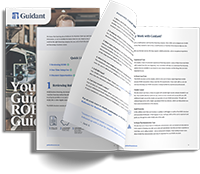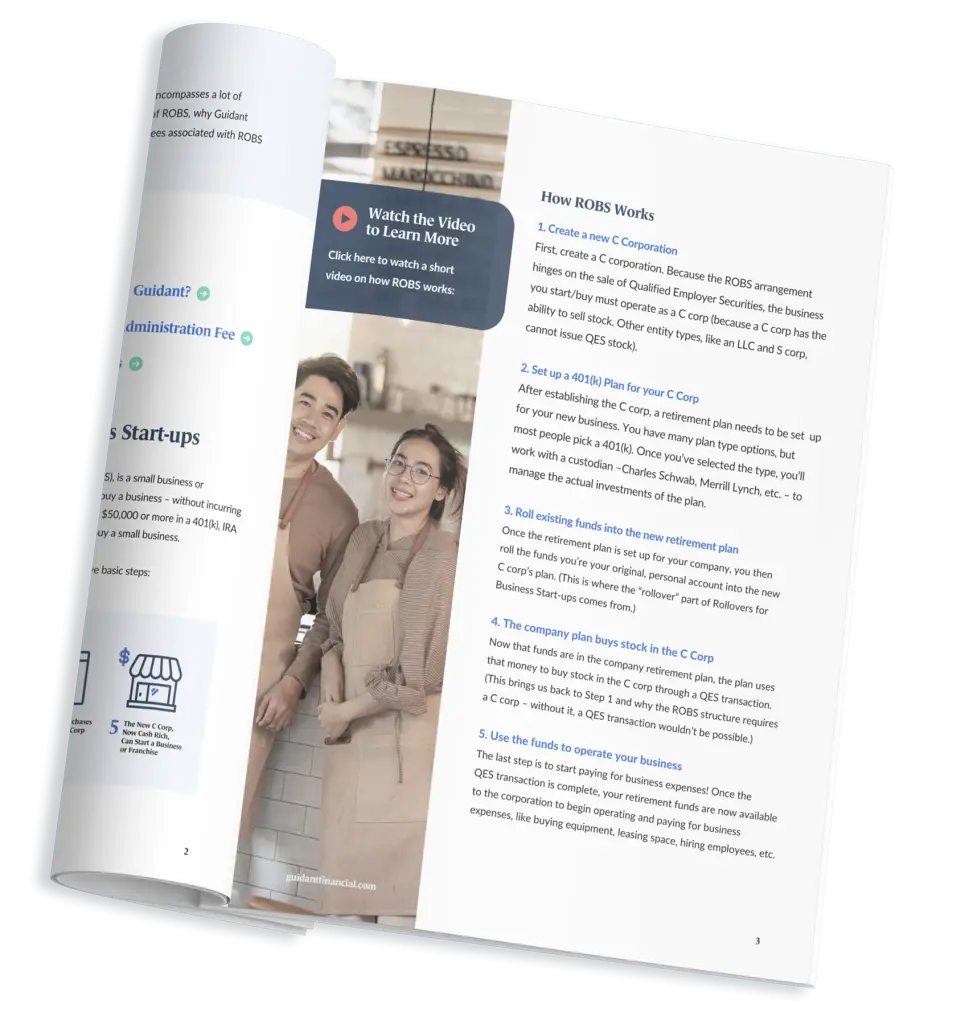Now that you know how to relocate your small business and your employees, it’s time to decide whether your workforce will work from home, an office, or use a hybrid arrangement.
If you’re in a flux state over your workspace, you’re not the only one. Should employees continue working remotely? Is it better to have everyone in person back at the office? Or does the future of work mean embracing a hybrid arrangement? Many companies have explored remote work since 2020 and a survey revealed that 57% of small business owners believe remote work will continue.
Ultimately, the way we go back to work will vary for every business and its specific needs. Currently, there are three general workspace models available to employees.
- Working from home (WFH)
- Traditional office
- Hybrid arrangement
Let’s review the pros and cons.
Working from Home (WFH)
Many employees have been adjusting to remote, work-from-home (WFH) arrangements since 2020. Initially viewed as a great experiment, remote teams became a critical necessity in helping keep employees safe while getting the job done in a global pandemic. According to survey results by WFH Research, 31.4% of employees never want to go into the office.
Work from Home Pros
The success of remote work has been widely lauded for ushering in a new kind of workplace model. The wins have been visible for both businesses and employees. Work from home has helped create new norms and challenges the idea that we work best when sitting at our office desk. Moreover, working from home signals that a better way of life is possible for employees and has given many the freedom to move to new cities and communities and remove excess commute time from their daily routines.
Increased Productivity
As far back as 2013, Apollo Holdings found that remote employees were measured to be 34% more productive on 16 objective measures. In 2017 National Equity Fund reported in a Chicago Tribune Interview that their employees were 50% more productive after being allowed to work from home 3 days a week. Owl Labs found in 2020 that 75% of people are just as productive — or even more productive — when working from home. After an analysis of currently available research, Global Workplace Analytics concluded in 2021 that a 15% increase in productivity due to remote work is equivalent to getting 74 employees for free each year.
Reduced Carbon Footprint
Working from home supports environmental initiatives by reducing carbon footprints from commuting. A paper published in Nature Climate Change estimated that confinement due to COVID-19 reduced daily carbon emissions by 17% at its peak. This is important when consumers and employees both increasingly expect businesses to be socially responsible — 65% of employees want to work for a company with strong environmental policies.
Improved Mental Health
Employees who work from home are more likely to have the resources and emotional support necessary to deal with work stress, says FlexJobs, which conducted a survey in July 2020. Employees with flexible work options are also more likely to report good mental health, according to the same survey.
Remote Work as a Recruitment Tool
If your company previously remote work, but then insisted you had to return to the office five days a week, what would you do? Nearly 35 percent of employees would begin looking for another job, according to a paper published by WFH Research.
Work from home is now widely considered a benefit. Like many benefits, adding work-from-home options is likely to improve retention.
Wider Talent Pool
When businesses foster a remote workplace, they can begin hiring from a wider pool of employees. Guidant, for example, previously hired only in the Pacific Northwest. When the company went fully remote, they began hiring all over America and now have employees in more than 15 states. This expanded access to a greater talent pool was a great way to ease hiring difficulties and increase internal company diversity.
The hiring benefits of remote work hold true even if you’re running a local business. Flexible work-from-home options allow highly qualified people with disabilities to compete for jobs that may have been unavailable otherwise. Remote work truly allows employers to hire the best of the best.
Work from Home Cons
Working from home is not without its downsides.
Increased Distraction
Though nearly a third of all employees want to be working from home full time, the same WFH Research report shows that 22.4% want to be in the office full time. The reasons for this are varied, but living with children 18 years old or younger is a major predictor
Decreased Work-Life Balance
One of the greatest challenges has been maintaining a work-life balance. Not that work is within the home, many employees struggle to separate work life from their personal life. In response, leaders and companies have emphasized the importance of logging off and powering down work devices at the end of the workday and actively practicing unplugging.
More Challenging Training and Culture Maintenance
When employees can’t absorb the company culture passively through the work environment, it’s necessary to conduct explicit outreach. This often requires more proactivity on the part of managers and human resources teams, who now need to schedule more in-depth training and check-ins to make up for the in-person advantage. This is one of the most critical weaknesses of the remote work model.
Office
In a traditional office environment, all aspects of business are conducted in an office including in-person meetings and collaboration sessions among teams.
Up until the COVID-19 pandemic, the traditional office setting was slowly being reshaped into a “cool” space. This office reboot was meant to attract and retain talent. In the United States, coming into the office meant receiving various work perks like free snacks, catered lunches, and ping-pong tables and activity rooms designed to increase engagement between colleagues. Some companies went a step further in enhancing perks by offering employees public transit and parking passes and gym memberships.
There are also vaccinations, which are a matter of workplace safety. For many companies, returning to the office means employees must receive the COVID-19 vaccine for health and safety purposes. Per the Biden Administration’s vaccination mandate, employees working for companies with 100 or more employees are required to be fully vaccinated by January 4, 2022. Not all employees are eager to try social distancing in the workplace.
After the onset of COVID-19, returning to the traditional office is becoming a harder sell with employees. Here’s why:
Office Pros
Increased Innovation
A major benefit of office attendance is meeting by chance. While working online doesn’t limit social interactions, it does limit the sort of random encounters you’d get at the water cooler or riding the elevator. In fact, a survey by workplace analytics company Humanyze found that this type of encounter (between weak connections) decreased by as much as 21% in companies working remotely.
Weak connections have been recognized as a source of innovation since the 1970s. The basic idea is that people who work closely together tend to know the same information. People with more distant work relationships are more likely to know information that’s different. In the intersection between different bodies of information is, of course, innovation.
Many companies have invested a lot of time and money into helping these chance encounters happen (see all the “cool workplace” perks, for example, or at-work cafeterias and coffee shops). Without intervention, remote workers simply won’t encounter their weak connections.
Enhanced Sense of Unity
Goal contagion is the psychological phenomenon of adopting someone else’s goals when you see their goal-pursuit behavior. It’s often used intentionally or unintentionally to increase company unity, team spirit, and good feelings overall between coworkers.
Goal contagion is more likely to work if people are socially close to each other — something far more likely to happen if you share the same office space. In this respect, office work pulls ahead. Remote companies will need to be more creative about increasing morale.
Office Cons
Less Creative Thought
ADP Research Institute’s 2021 study “On-site, Remote or Hybrid: Employee Sentiment On The Workplace” reveals innovative sectors may struggle with returning to the office. Surveyed workers express that they may be less able to think creatively in the office than what they experienced working remotely. The jury is still out on whether this anxiety genuinely leads to reduced creativity or not. Nonetheless, the worry is telling.
Cost of Office Space
This is perhaps the most obvious con. Companies working out of offices will be spending considerably more money than those without a physical location. Companies must expensive leases must still be paid when employees are away.
Cost of Commuting
Commuting doesn’t only cost companies money, it costs them productivity in the form of unhappy employees. Guidant found their remote employees use that extra time for self-care and home management, leading to a better sense of work-life balance. Employees that still commute miss out on those benefits.
So, what happens next for the traditional office? These offices may be primed to shift into a hybrid arrangement.
Hybrid Work Model
A hybrid arrangement may be a solid alternative for those that do not plan to return to the office full-time or companies that are looking to embrace more remote work.
A hybrid workplace is pretty self-explanatory. Employees come into the office and work in that space for a few days each week. The remaining days of the week are spent working from home.
Hybrid Model Pros
Hybrid models can be the best of both worlds, but they’re not for every company.
Stronger Relationships with Colleagues
According to ADP Research Institute’s study, 79% of surveyed hybrid work experience stronger connections with their teammates on a hybrid team. Compared to as opposed to 64% of fully remote employees and 70% of on-site employees.
Better Relationships with Management
The ADP Research Institute also showed that hybrid employees also report a more positive outlook on their managers compared to on-site and remote workers. The study also suggests that a hybrid arrangement may ease the transition from the pandemic work environment to a more normalized work routine.
Hybrid Model Cons
Disjointed Communications
At one point or another, you’ve probably been a remote attendee to an in-person meeting. And though many event venues have strived to duplicate the in-person experience, it’s far from perfect.
The same is true of the office experience. As you may have experienced, the hybrid video calls tend to split into two meetings altogether: one between those in person, and those online. It’s simply easier to communicate with people using the same medium. People in physical offices tend to unintentionally prefer communication with other office workers.
Presenteeism Bias
If your manager starts coming into your place of business on some of your work-from-home days, what will you do?
Nearly half of employees state they would come into work on some or all of the days their manager does, even if it goes against their employer’s hybrid working plan. The reason isn’t clear — it could be that workers want to be seen as hardworking by their manager, or are looking for the benefits of being mentored and managed.
Regardless of the underlying reasons, this pattern speaks to the challenges of hybrid work. For hybrid to work managers also need to follow the rules and work from home on their assigned days. Otherwise, they risk the entire scheme breaking down.
Technological Infrastructure
If you don’t already have a robust technological infrastructure with a team that can manage it, a hybrid structure may not be for you. In some ways, it’s even more complicated than an all-remote or in-person setup, and employees — especially those with low technological literacy — will need a lot of support. Companies lacking the resources or expertise may find the hybrid setup disadvantageous.
Which Work Arrangement is Best for Your Business?
How will we go back to work post-pandemic? This is an ever-changing conversation for businesses. Some companies are starting “work from anywhere” programs while others are choosing to reopen in phases.
The keyword in determining the best possible working arrangement for a team is flexibility. We now have a variety of work models available to team members. Most team members understand how to work in each type of environment. Moreover, they are also likely to understand their personal comfort and productivity levels in these spaces.
Leaders may discuss work arrangement options with team members based on their performance and job function. Listen carefully to what each team member has to say. Remind them that they are always welcome to change their mind if they find a certain work arrangement doesn’t work for them anymore. For example, if an employee returns to the office full-time and struggles to focus and concentrate on the task at hand it may be wise to suggest they hop on a hybrid arrangement for an easier transition.
The other keyword is transition. However each business decides to go back to work, there may be initial growing pains for team members. Gradually over time, however, each person will get back into their rhythm and receive the flexibility that allows them to do their best work for the business.
Deborah Sweeney is the CEO of MyCorporation.com. MyCorporation is a leader in online legal filing services for entrepreneurs and businesses, providing start-up bundles that include corporation and LLC formation, registered agent, DBA, and trademark & copyright filing services. MyCorporation does all the work, making the business formation and maintenance quick and painless, so business owners can focus on what they do best. Follow her on Twitter @deborahsweeney and @mycorporation.
















